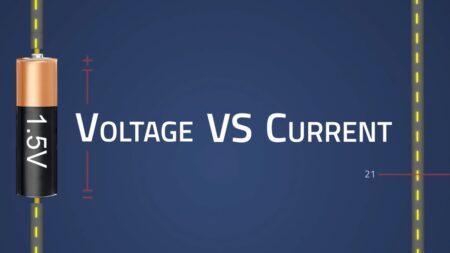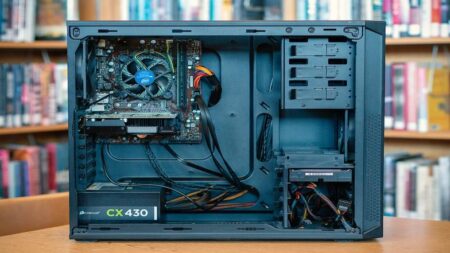There was a time when it used to take hours for our cell phones to charge. Even today, older smartphones take a long time to recharge. But the latest smartphones get recharged within no time. How does it happen? You should thank the PD charger for recharging your smartphones within 15 to 20 minutes. This article discusses PD chargers and how they function.
What is a PD charger?
PD denotes Power delivery. PD technology has become popular today because it enables charging your device more quickly than the standard 5W chargers. Therefore, PD chargers are also known as superfast chargers.
PD is a specification that allows handling higher power and enables a range of devices to charge rapidly through a USB connection. USB PD chargers use a USB cable to help with rapid charging. In addition, since it uses USB C ports to charge devices, it can power various devices.
USB PD allows power levels up to 100W and voltages 5V, 9V, 15V, and 20V. This table should clarify matters better. It compares various chargers with USB PD chargers.
| USB Version | Maximum Power | Voltage | Maximum Current |
| USB 2.0 | 2.5W | 5V | 500 mA |
| USB 3.1 | 4.5W | 5V | 900 mA |
| USB BC 1.2 | 7.5W | 5V | 1.5 A |
| USB C 1.2 | 15W | 5V | 3 A |
| USB PD | 100W | 5V, 9V, 12V, 15V, 20V | Up to 5 A |
How does the USB PD charger work?
What will happen if you plug in a 100W cable into your smartphone? Yes, you are right. It will harm the phone rather than do anything good. However, the USB PD charger is different because it gauges the device’s wattage requirements and adjusts the energy flow accordingly. This adaptable power output of the PD charger differentiates it from conventional chargers. Combine the power output of the PD charger with the USB C’s universal standard, and you get a power cable that can charge multiple devices.
What makes USB PD special?
Smartphone users know that multiple fast charging technologies are available. For example, you have Samsung’s Adaptive Fast Charging, Huawei’s Super Charge, Qualcomm’s Quick Charge, and others.
However, do you know that these technologies are proprietary? It entails that these technologies can help charge their specific devices alone. For instance, Samsung’s Adaptive Fast Charging technology cannot work with a Qualcomm-enabled smartphone, and vice versa. So, if you change your smartphone, you must change the charger, as well, because it becomes useless.
However, USB PD is a universal technology. In simple words, a USB PD charger can recharge any smartphone that has fast recharging options through a USB-C connection. In addition, these chargers can also charge gaming consoles and other devices because the PD chargers adapt their output to the device’s demand.
The PD chargers can work at five voltage levels. But if the charger cannot provide the voltage supported by the device, it cannot offer rapid charging.
Unique Characteristics of USB PD
We have seen that USB PD chargers can deliver rapid charging. Secondly, these chargers can be used universally. Besides, USB PD chargers offer two-way charging. So, a USB PD device can accept and give out energy to charge other devices.
For example, you can connect a monitor to your laptop through USB PD. The USB C cable allows screen transmission because it has DisplayPort. So, if you switch on the monitor and connect your laptop to it using the USB C cable, the monitor displays whatever the computer shows, while simultaneously, the laptop’s battery gets recharged.
So, USB PD is a revolutionary technology that makes fast charging simple for users and manufacturers alike.
How do you use USB PD?
The primary requirement to get this technology started is a charger and a device that supports USB PD. Please note that some gaming consoles or devices can support USB PD but are not compliant with USB C.
If you have a USB hub, you can find them having PD charging ports to help charge the USB PD devices faster.
Are USB PD chargers safe to use?
Many wonder whether it would be acceptable to insert a USB PD fast charging cable into a smartphone that does not accept it. Generally, USB PD-compliant smartphones come equipped with USB-C charging ports. Therefore, if the smartphone does not have a USB charging port, it will not accept a PD charger. Therefore, there should not be any problem at all.
Phones equipped with PD fast charging technology can recharge up to 100% within 15 to 20 minutes. Therefore, USB PD saves tremendous time for smartphone charging. Usually, such smartphones have intelligent battery management systems. Accordingly, they adapt quickly and turn on smart charging protection according to the situation.
Thus, we infer that PD chargers are safe and do not harm the smartphone battery. However, you should know that higher-wattage devices require special cables that can transmit high currents. Otherwise, the cable can burn.
Final Thoughts
PD chargers are the future of rapid charging. The two-way charging facility PD chargers offer a handy feature because you need not carry multiple chargers. Instead, a single PD charger can recharge all compatible devices universally.


